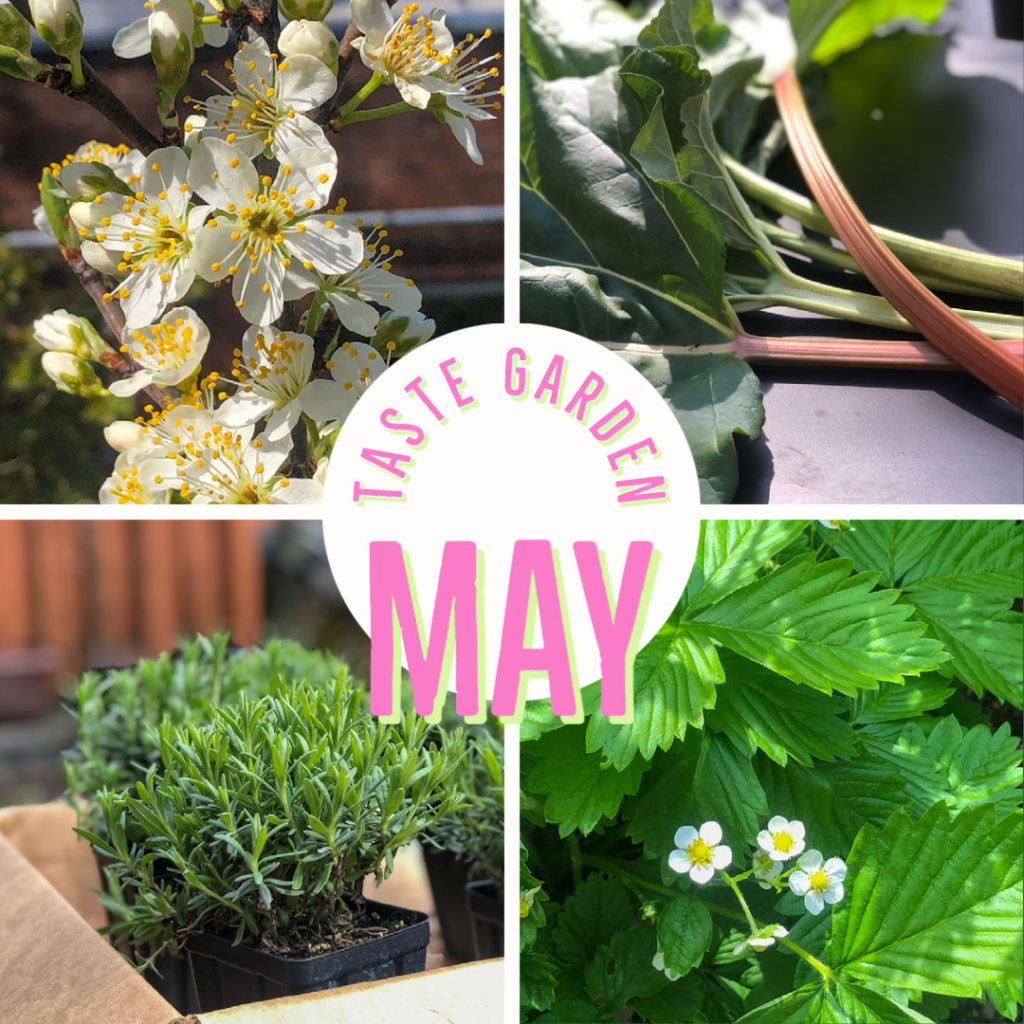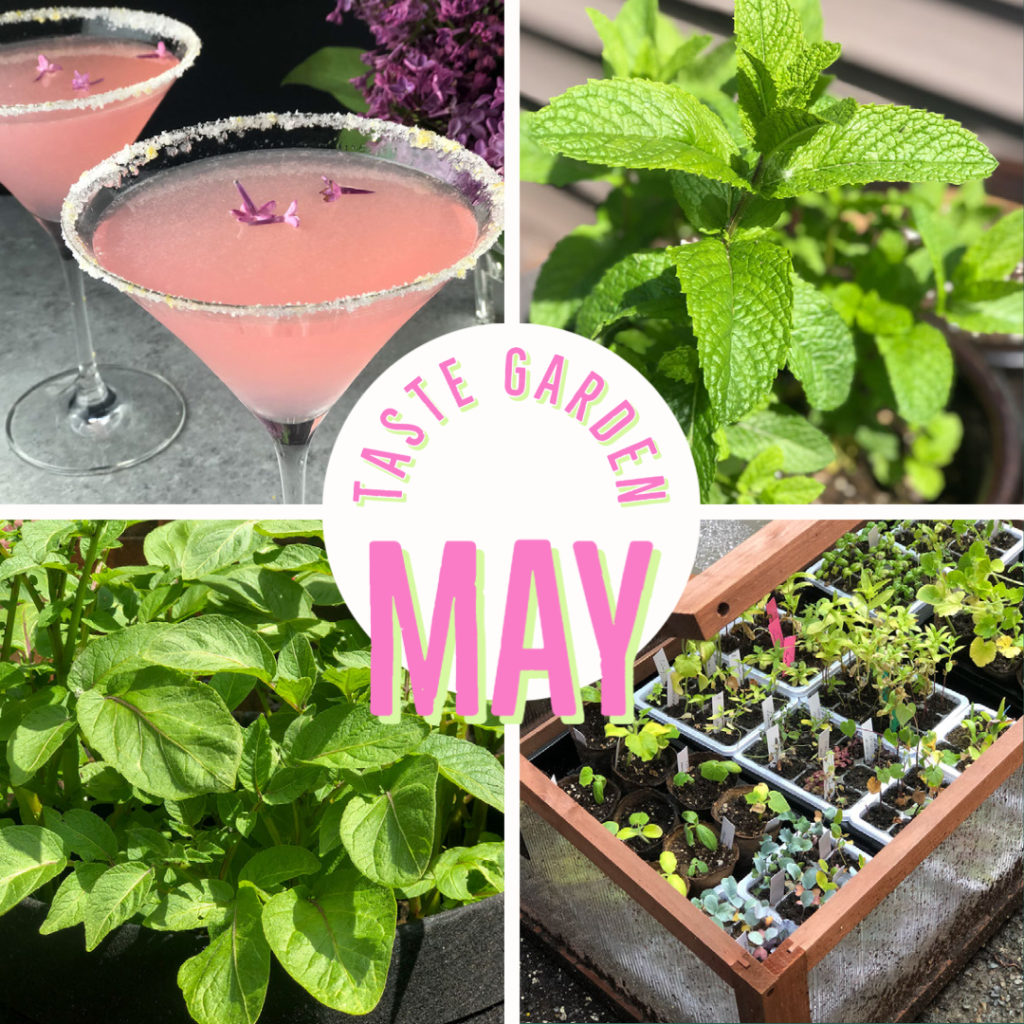
Welcome back to our Taste Garden. In this week’s edition, we’re sharing our “G to L” posts featuring grow bags, herbs, indoor seeds, an Italian kitchen garden, and the recipe for a delious lilac lemon drop cocktail. Enjoy! -Kimberly & Chris
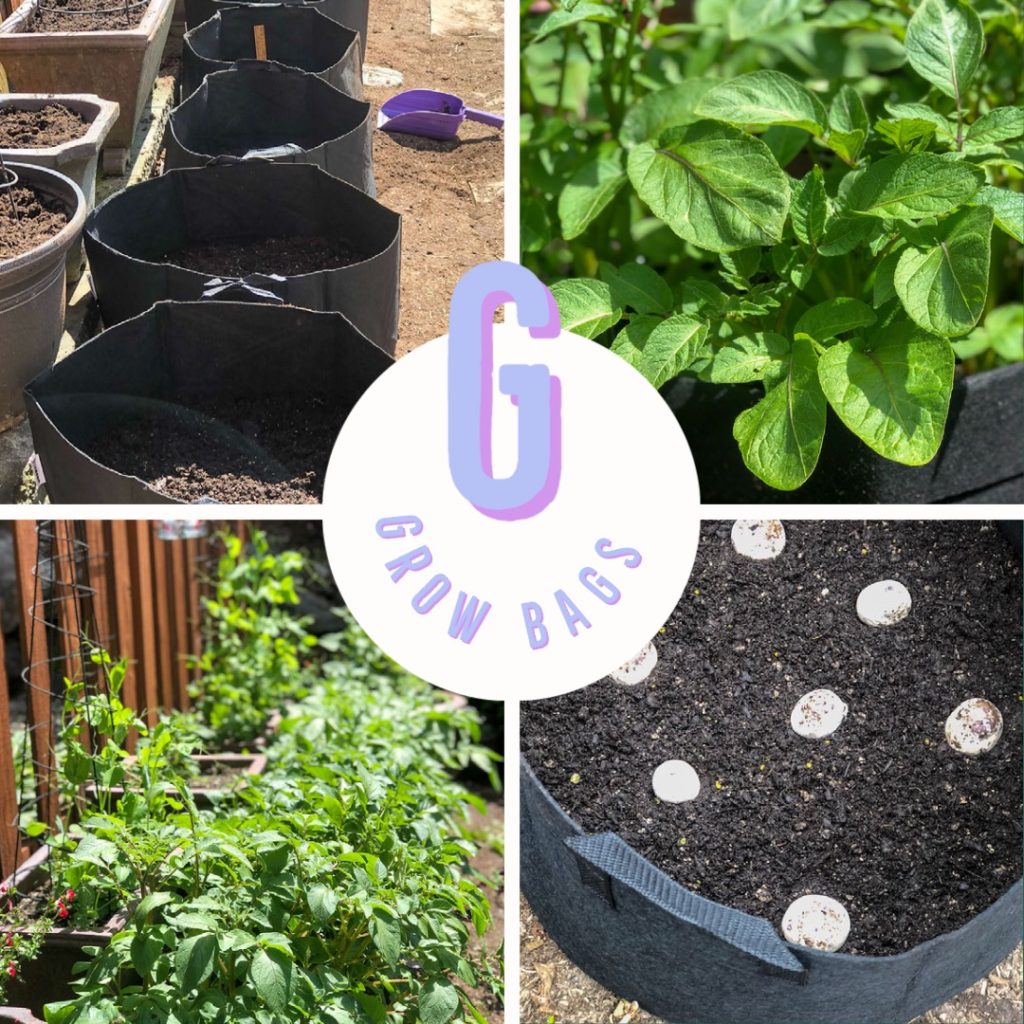
Our perpetual dilemma is how to fit as much as we can into our relatively compact suburban garden which has not been blessed with the richest soil. One solution – grow bags!
Last spring we bought our first Vivosun bags and experimented with using them to grow potatoes, and I can attest that our plants loved them. We seeded eight different varieties and by summer had a healthy and prolific harvest.
We like the 20-gallon bags, but you can get them in a variety of sizes from 1 gallon all the way up to 30. They’re made of a nonwoven fabric (feels almost like a heavy felt) and the company describes them as “moderately permeable, environmentally friendly, and BPA free.” They also have handles, which makes them easy to move, and they’re impressively well-constructed and attractive. I left the bags outside all winter (with some potatoes still inside – which we were able to harvest even during the colder months) and both the bags and our crop held up perfectly.
We’re definitely fans, and this year bought a few more to tuck into our edible garden; in addition to potatoes, we’ve planted broccoli, Brussels sprouts, and cabbage in our grow bags. We’ll share their progess later this summer.
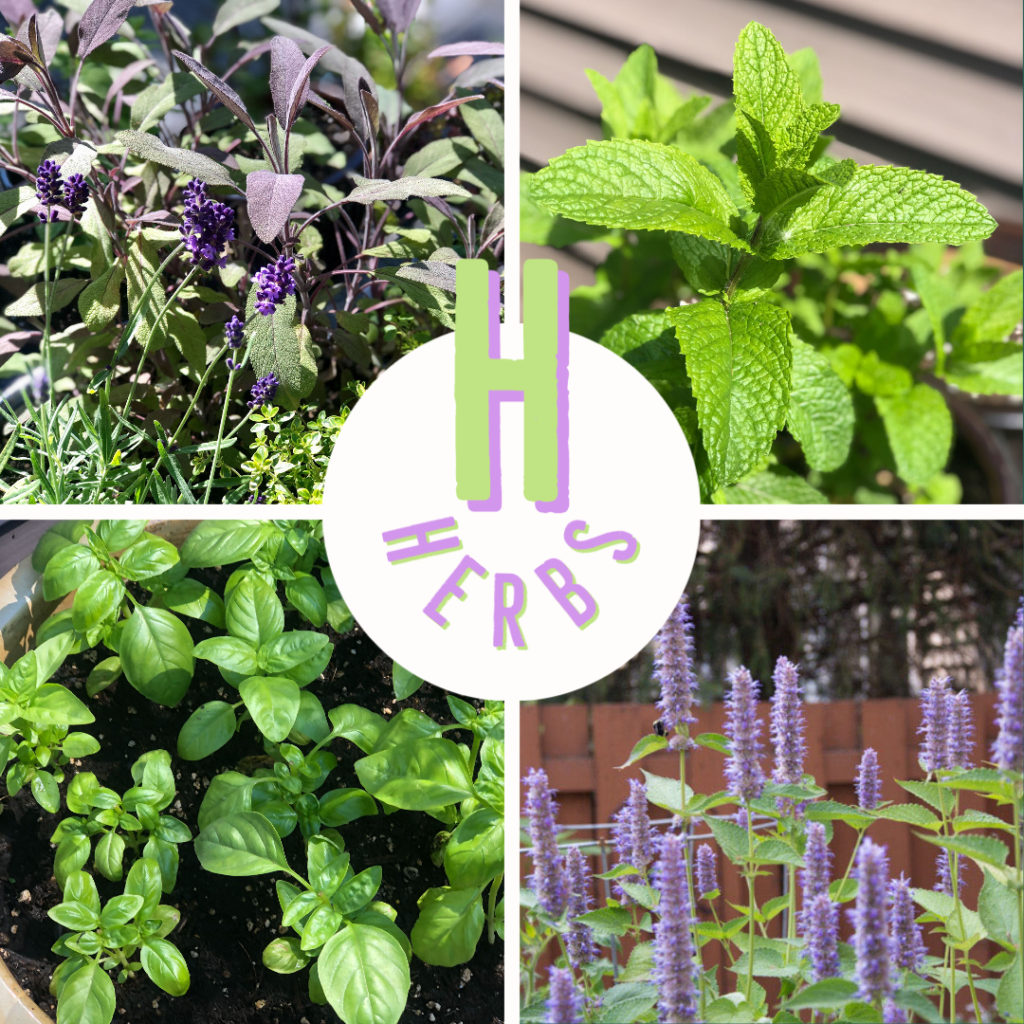
Herb gardening has a special place in my heart! My mom used to grow containers of herbs on our back deck, and one of my favorite memories is wandering through the garden together as she taught me to gently rub the backs of the plants with my fingers, to inhale the scents of their oils. I was hooked from the start, and when I moved away from home, she was there to help me set up my first herb garden.
We lost her, far too young, but those gardening moments are still with me, and every time I’m out in our herb garden, I still feel her presence.
Chris and I grow, frequently use, and appreciate many of the traditional herbs I started with– basil, dill, cilantro, parsley, chives, thyme, and oregano. But the world of herbs is a vast one, and we’ve branched out with some more unconventional herbs as well, such as epazote, anise hyssop, and perilla. Each year we try to add a few new varieties, and so far this spring we’ve planted angelica, chamomile, and ginger scented geraniums for the first time.
As for my favorites – oh, that’s so hard to pick! Lemon variegated thyme, chocolate mint, Thai basil, pineapple sage, and Hidcote Blue lavender might be at the top of the list, but every herb we grow has its own appeal.
Herbs are truly incredible plants – beautiful in their own right, loaded with medicinal properties, and delicious to cook with. I love discovering new culinary uses for our them, such as lemon verbena ice cream, borage ice cubes, summer squash sauteed in lemon basil, and mojito mint cocktails. They’re truly the cornerstone of our kitchen garden.
That’s just a little “taste” of our herb garden; there’s so much more to share, and we’ll be focusing on the individual herb varieties and sharing recipes in future posts!
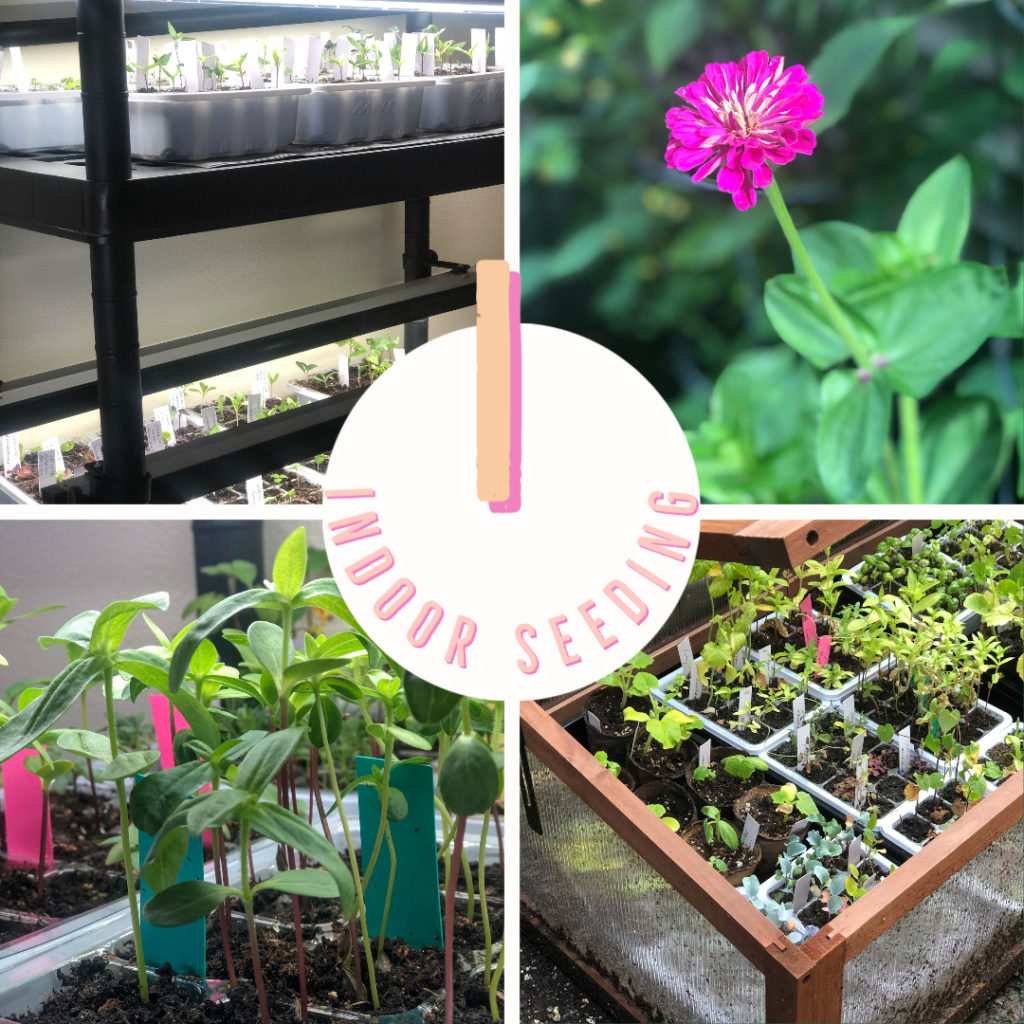
When the pandemic struck last year we were uncertain about our local food supply and if our local nurseries would even be open in the spring to purchase transplants for our edible garden; so, we decided it was time to start our own seeds indoors.
We ordered a three-tier LED Stack-n-Grow Light System from Gardener’s Supply Company (love it!), and Chris handily put it up one afternoon, while I spent the day pouring through seed catalogs, trying my best to reign in the impulse to stock up on every plant imaginable.
What a fun week when the seeds started to arrive! Armed with stacks of 12-cell MIXC seed starter trays (humidity vented domes – very cool!) that Chris found online and multiple bags of Espoma Organic Seed Starter Premium Potting Mix, we got to work planting.
Our first results were hit and miss – and we lost a few seedlings along the way (hello cold air temperatures and goodbye peppers), but it was an incredibly satisfying experience. I’ll never forget the day our first zinnia bloomed outside – one that we had sown by hand weeks earlier, gently nurtured, hardened off in our cold frame, and planted out with a lot of hope and a little trepidation. What a beautiful sight!
Fortunately, our nurseries did reopen last spring and our food supply remained stable, but we loved the process of starting seeds indoors so much, that we’re back at it this year – on an even larger scale. Right now, the three tiers of our grow light are chock full of peppers, eggplants, tomatoes, alpine strawberries, herbs, and a wide array of flowers slowly growing beneath the lights.
It can be challenging, for sure. Regulating temperatures, monitoring watering, and meeting the unique needs of each plant isn’t always easy, but the pitfalls are far outweighed by the rewards. The cost savings are significant, you can grow varieties that may be hard to find in retail settings, and it’s just plain fun.
Our biggest takeaways – plants are incredibly resilient, and mistakes are simply opportunities to learn. And one final thought…I might need a few more lights next year! Hmmm…
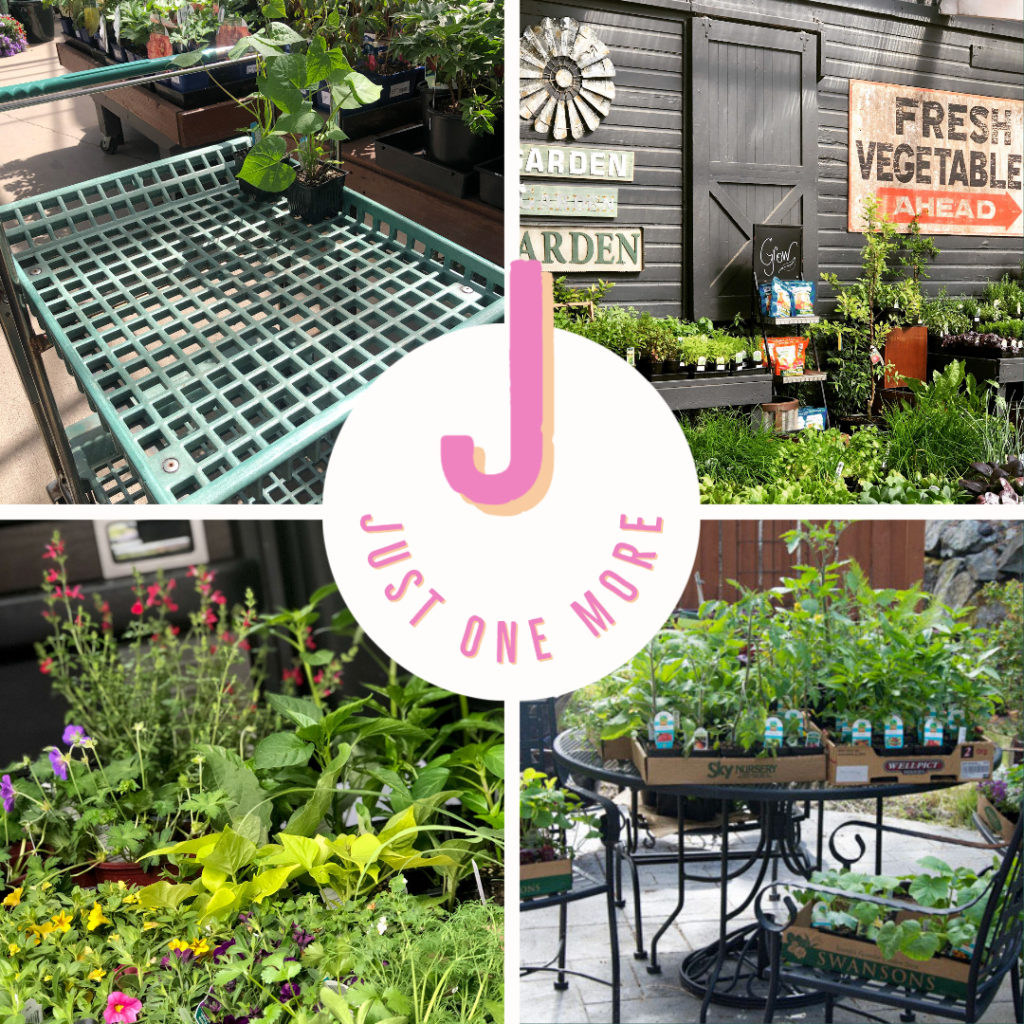
True confession time…I have a little bit of a plant addiction, and every year – right about this time – it kicks into full gear.
It all starts innocently enough with a simple trip to the nursery to see what’s in stock. I wander the aisles, admiring old favorites, checking out new possibilities, and mentally beginning to plan this year’s garden. Oddly enough, I rarely buy anything on those first spring visits – I’m content to simply take it all in.
But it’s on my return trip, even with a carefully crafted list in hand, that things start to go south.
That first plant goes into the cart and all my good intentions fly out the window. Before I know it, I’m pushing an overflowing cart up to the cash register, gently tucking plants into very available space in our truck, and then filling up our patio table with boxes full of new additions.
It’s a problem, I know, and I’m working on it. I’m fairly frugal in most areas of my life, budget carefully, and am always on the lookout for a good deal. But when it comes to the garden…that’s a bit more challenging.
Last week I set a new goal: no more plants until every one of our spring purchases had been transplanted. All was going well, until Wednesday night, when we impulsively headed to a nursery so Chris could pick up some newly sprouted hops rhizomes.
And there it was…a little beauty, a specialty herb that I’d been searching for. I looked up at Chris with a guilty grin. “Just one more.”
He smiled and nodded – he knows me well.
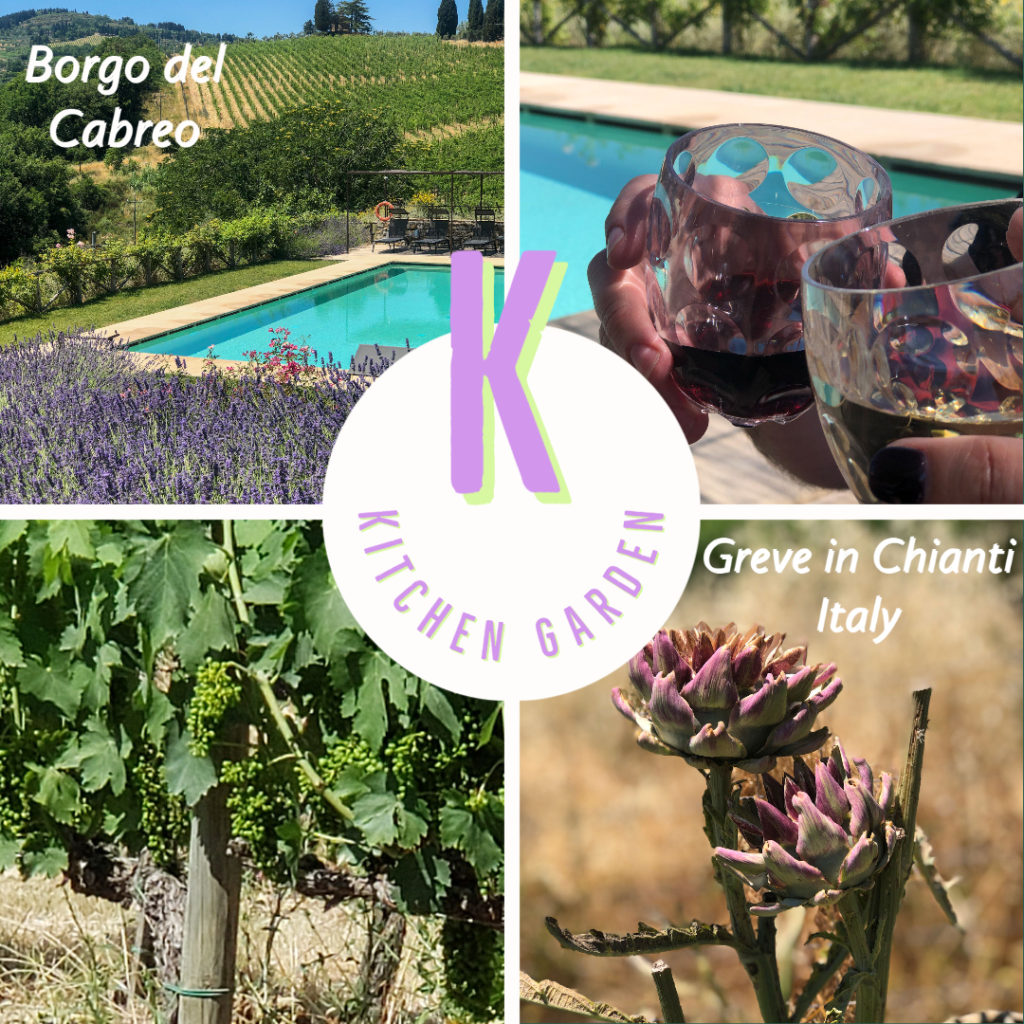
In addition to snapshots of our own edible garden, in this blog we’ll be sharing favorite finds from our local community and beyond. Here’s one to kick it off…
Borgo del Cabreo is a magical place – a tranquil retreat in an idyllic location – with a spectacular Italian kitchen garden.
Chris and I stayed at Borgo del Cabreo two years ago while on a three-week trip through Italy. It’s a fabulous property, located on a hill above Greve in Chianti, a quaint Tuscan village located in the heart of Italy’s Chianti wine country. Its eleven luxurious rooms are spread throughout the property, offering breathtaking views of the surrounding olive groves and family-owned vineyards.
And best of all, there is a stunning kitchen garden at the top of the property complete with tomatoes, peppers, hedges of sage and rosemary, apricots, figs, artichokes, sunflowers, and so much more.
An outdoor breakfast room with intimate tables sits on a patio overlooking the surrounding countryside. Each morning we were treated to an incredible breakfast buffet featuring produce fresh from the garden. We’d pile our plates full of warm bread, salami, mozzarella with tomatoes and basil, nutty Parmesan, grilled artichokes, and a buttery fruit tarts.
Following breakfast, we’d sit outside reading and sipping espresso, the quiet punctuated by the sounds of a tractor tending the groves, the buzzing of the bees, the hum of the cicadas, and a touch of Italian conversation in the distance. During the day, we’d head down the hill into town, taking time to stop and admire the gnarled grapevines that stretch as far as the eye can see.
After exploring the local area, we’d hit the pool, accompanied by a glass of wine from the property’s cellar – locally produced from the vines surrounding us. At night we’d sleep with the windows open, the scents of rosemary and lavender filling the room.
Calm, serenity, and a feast for the senses. Borgo del Cabreo is truly special.
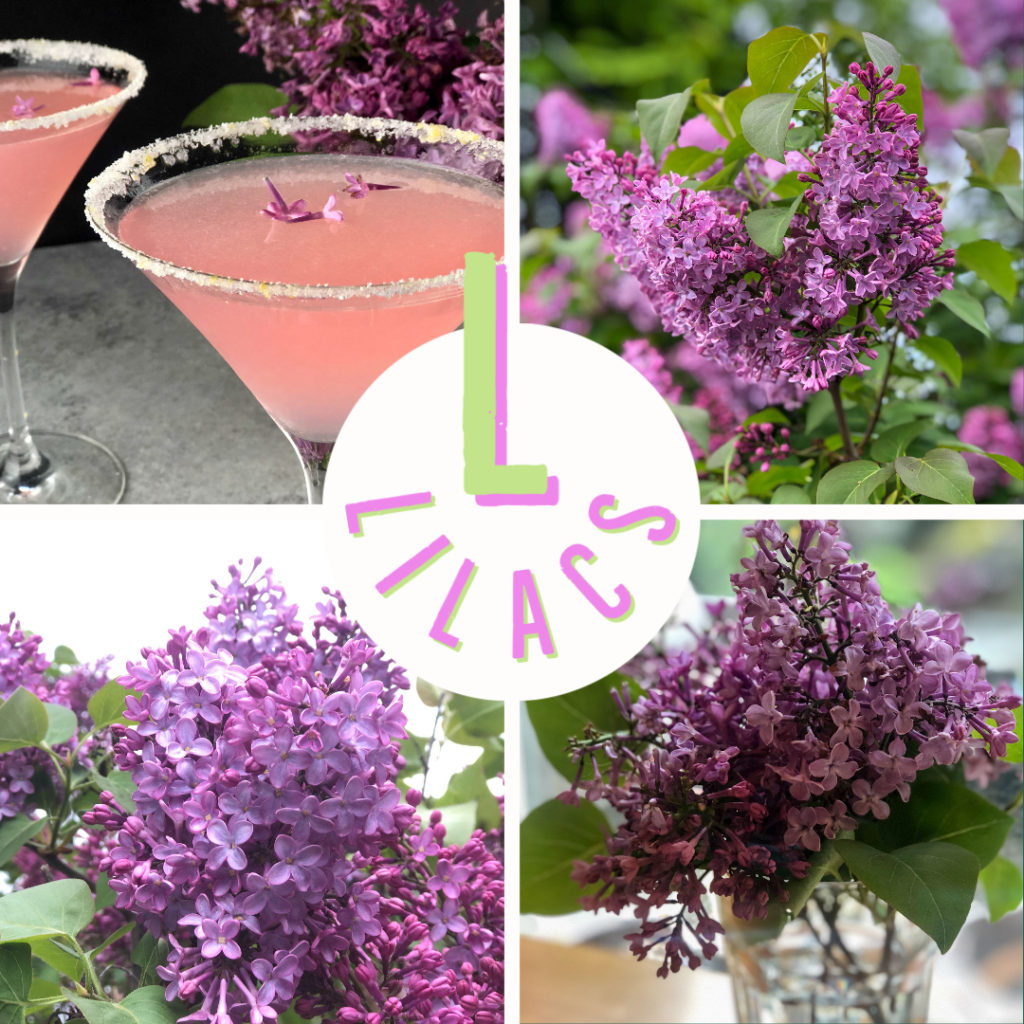
We have a cabin that came with a large and neglected lilac bush. But despite the limited maintenance, each spring we’re faithfully greeted with a burst of brilliant violet flowers.
I’ve always loved lilac bushes and their gentle fragrance that wafts through the air, but until recently I didn’t know that the flowers are edible.
Last year I came across an intriguing recipe for a lilac lemon drop martini (The Spruce Eats by Colleen Graham) and it turned out to be one of our favorite new drinks.
You start by making a lilac simple syrup (I boiled 1 cup of water with 1 cup of sugar, then infused 2 cups of lavender petals in the syrup for 8 hours, and strained). Add the ingredients and some ice (1 ½ ounces vodka, ¾ ounce lemon juice, and ½ ounce lilac simple syrup) to your cocktail shaker and mix it all up. Strain and pour.
For an extra touch, I created a lemon sugar rim for our martini glasses (zest a lemon, mix the zest with some sugar, coat the rim with lemon juice, and then roll it in the lemon sugar) and floated a few lilac petals on the top.
So delicious! The quintessential sip of spring.
Up Next…
Thanks for taking the time to read our most recent “A to Z” Taste Garden post! Stay tuned for next week’s post featuring mason bees, one of our favorite nurseries, rhubarb, and more.
-Kimberly and Chris
